Plants are so good for us! Just the thought of an indoor garden makes me happy. Plants help people relax and feel good. While horticulture is predominately an outdoor hobby, it’s not difficult to grow plants inside the home throughout colder, winter months. Consider bringing air-freshening, natural life to your home interior with healthy houseplants. Not everyone is born with a green thumb, so use these list of low care houseplants perfect to keep things easy. These are six of my favorite low-maintenance plants that thrive with minimal attention but still bring life and beauty to any room. In addition to these easy to care for indoor plants for beginners, I also share houseplant care tips for keeping your house plants healthy.
Easy To Care For Indoor Plants
Here are the top low-maintenance indoor plants that bring life and freshness without demanding much attention. You really can have lush foliage cascading from your bookshelf! These resilient plants can effortlessly thrive even in the busiest of schedules. So, if you’re ready to embrace the beauty of indoor plants without the stress of high maintenance, keep reading for our expertly curated list of easy to care for indoor plants for busy individuals.

Snake Plant
Snake Plant, also known as Sansevieria or Mother-In-Law’s Tongue, is a fantastic addition to any low-maintenance indoor plant collection. With its striking sword-shaped leaves and ability to withstand neglect, this resilient plant is a perfect choice for busy individuals seeking a touch of greenery in their homes or offices. If you’re looking for a plant that you can forget to water for weeks on end, the Snake Plant is your go-to choice. Simply water it once every 2-3 weeks, allowing the soil to dry out completely between waterings, and you’ll have a thriving plant on your hands.
Another standout feature of the Snake Plant is its ability to tolerate a wide range of light conditions. Whether you have a brightly lit room or a space with limited natural light, this plant can adapt and flourish. It can handle low light, but it also thrives in bright, indirect light, making it a versatile option for any setting. Forget about constantly rearranging your plants to chase the sunlight – the Snake Plant will thrive wherever you place it.
In addition to its low maintenance requirements, the Snake Plant is also known for its air-purifying qualities.This natural air purifier is particularly beneficial for busy individuals who spend long hours indoors or work in environments with limited ventilation. With the Snake Plant by your side, you can breathe easier knowing that it’s actively working to improve the air quality around you.
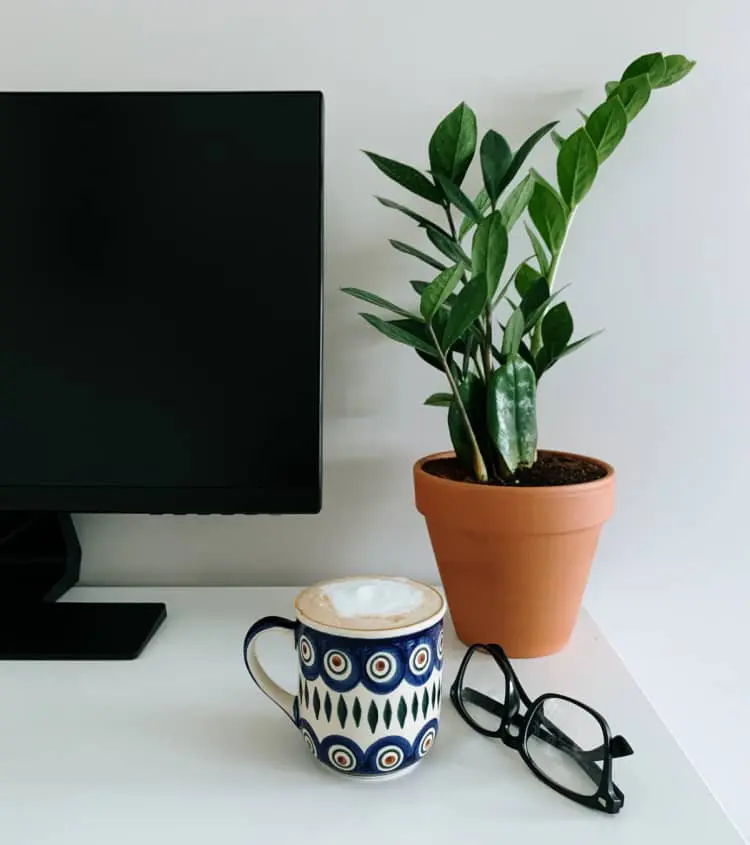
ZZ Plant
The ZZ Plant is another low-maintenance indoor plant. One of the standout qualities of the ZZ Plant is its adaptability to different lighting situations. This plant can tolerate low light areas, making it an excellent option for spaces that receive minimal natural sunlight. Whether you have a windowless office or a room with limited windows, the ZZ Plant will flourish and bring a touch of greenery to your surroundings.
In addition to being able to handle less-than-ideal lighting conditions, the ZZ Plant is incredibly forgiving when it comes to water requirements. This plant is known for its ability to store water in its thick rhizomes, allowing it to survive extended periods without being watered. For busy individuals who often forget or don’t have the time to water their plants regularly, the ZZ Plant is a reliable choice that won’t wither away due to neglect.
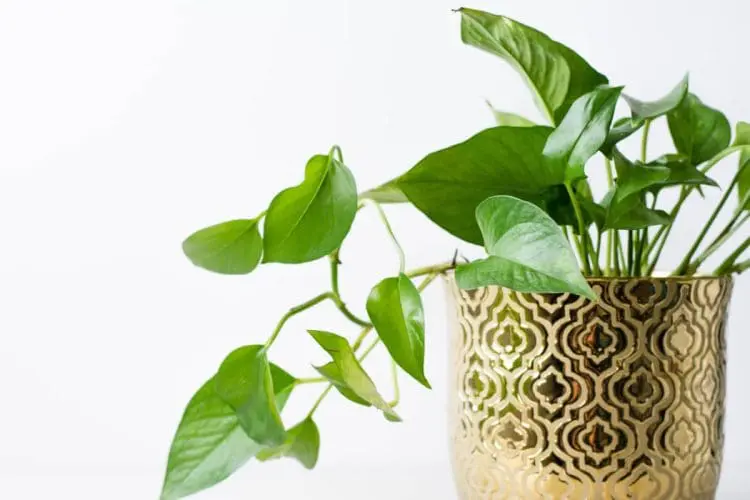
Pothos
Pothos, often referred to as Devil’s Ivy, is an incredibly versatile and low-maintenance houseplant. The Pothos plants can handle low light situations, but it will truly thrive in bright, indirect sunlight. This makes it ideal for placement in offices or rooms with large windows but limited direct natural light. They send out shoots that grow into trailing foliage so if you like the idea of it leaves draped down your bookcase, this is the plant for you.
In terms of care, overwatering can be detrimental to its health, so it’s best to let the soil dry out slightly between waterings. Busy individuals will appreciate the fact that they don’t need to constantly monitor the moisture levels of the soil.
Another great aspect of Pothos is its ability to purify the air. While it may not have the same air-purifying qualities as the Snake Plant or ZZ Plant, it still does a commendable job of removing toxins from the air.
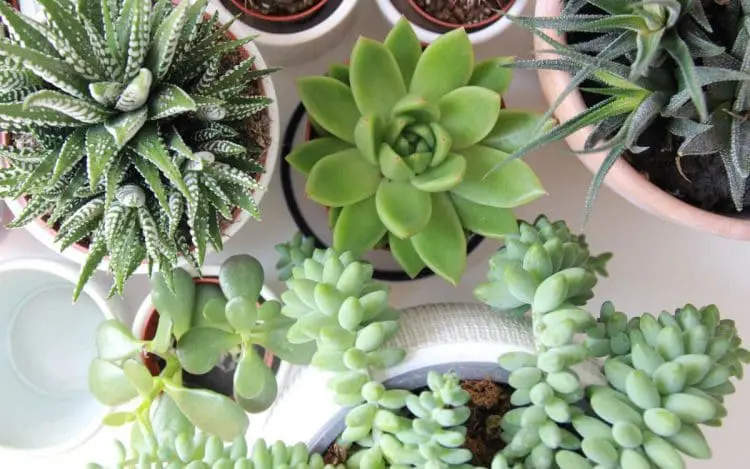
Succulents
Succulents have gained immense popularity in recent years due to their unique appearance and easy houseplant care. These charming plants are known for their thick, fleshy leaves and stems, which allow them to store water efficiently. This makes them incredibly resilient and perfect for busy individuals who may forget to water their plants.
Whether you have a sunny spot near a window or a dimly lit corner, there is a succulent species that will flourish in your space. Another advantage of succulents is their slow growth rate. Unlike some other houseplants that require frequent pruning or repotting, succulents tend to grow at a leisurely pace. This means you won’t have to worry about them quickly outgrowing their pots or taking up excessive space. They truly are easy to care for indoor plants.
Succulents also have a knack for adding a touch of natural beauty to any space. With their striking shapes, vibrant colors, and intricate textures, they serve as elegant décor elements that can effortlessly elevate the aesthetic of your indoor environment. You can find succulents at a plant store or order them through my affiliate Amazon links which follow in the next sentence. Whether you choose a classic aloe vera, a trendy echeveria, or a spiky haworthia, succulents are sure to enhance the visual appeal of your surroundings.
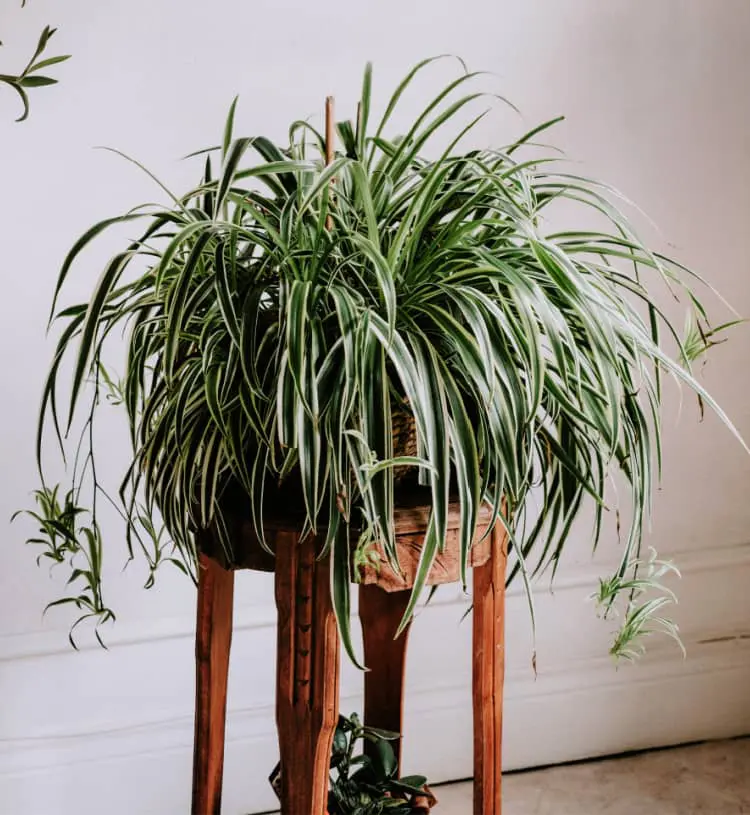
Spider Plant
Spider plants, also known as Chlorophytum comosum, are another popular choice for busy individuals seeking low-maintenance indoor plants. These resilient plants have long, arching leaves that are variegated with green and white stripes, adding a touch of elegance to any space. Not only are spider plants visually appealing, but they also offer several benefits that make them an excellent addition to your indoor garden. Similar to the previously mentioned plants, spider plants play a role in improving indoor air quality.
Another reason why spider plants are a great option for busy individuals is their adaptability. These plants are incredibly forgiving and can tolerate a wide range of growing conditions. They are known for their ability to thrive in various light levels, making them suitable for both well-lit areas and dimly lit corners. Spider plants are also quite resilient when it comes to watering. They can withstand periods of neglect and are relatively forgiving if you occasionally forget to water them.
Something fun that sets spider plants apart, is their ability to produce plantlets. This is actually how they get their name as the baby spider plants kind of look like they are descending on a web strand off the mother plant. These small offshoots grow from the mother plant and can be easily propagated. Simply snip off the plantlet, place it in water or soil, and watch it grow into a new spider plant. This self-propagation feature not only adds to the plant’s charm but also allows you to expand your indoor garden without much effort.
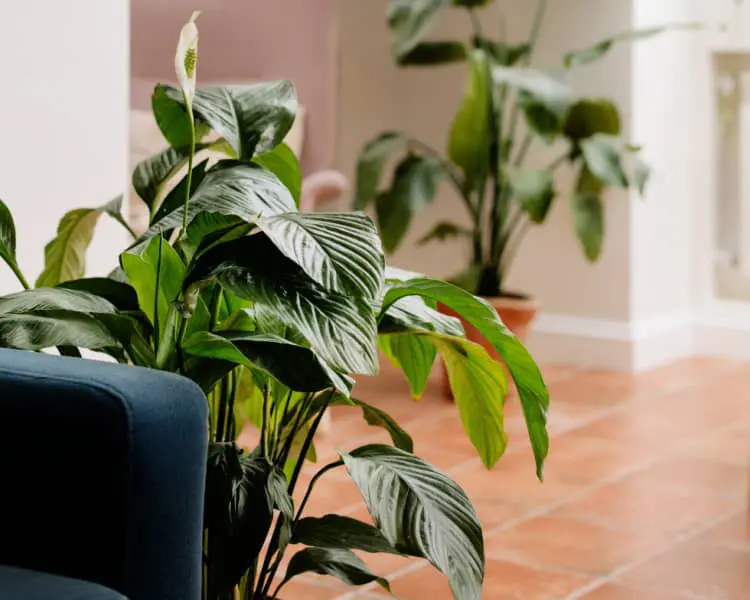
Peace Lily
The peace lily, also known as Spathiphyllum, is a popular choice among indoor plant enthusiasts for its stunning foliage and minimal care requirements. When it comes to caring for a peace lily, simplicity is key. This plant thrives in moderate to low light conditions, making it perfect for spaces that receive minimal direct sunlight. Unlike some other plants that may suffer from neglect, the peace lily will often droop as a sign that it needs water. This visual cue makes it easy to know when it’s time to give your plant a drink. Simply water the peace lily until the soil is thoroughly moist, but be careful not to let it sit in water at the base as that can lead to root rot.
In addition to its air-purifying qualities and ease of care, the peace lily also rewards its owners with beautiful blooms. These elegant flowers not only add a touch of sophistication to any room but also serve as a reminder to take a moment and appreciate the natural beauty around us.
Tips On How To Care For Houseplants
Really with the low care houseplants we mentioned above, you should have to do very little to keep them healthy. Watering your minimal maintenance plants once every week is usually all they need. But if you are interested in learning more about caring for plants, the below insider tips and tricks will help to effortlessly become more of a green thumb. Say goodbye to worrying about wilting, withering plants and hello to a stunningly green and vibrant indoor oasis. Learn the simple yet effective techniques to ensure your indoor plants thrive. From finding the perfect spot for each plant to providing the right amount of water, this guide will help you create an indoor garden that flourishes with minimal effort.
Don’t Over Water House Plants
Amateur gardeners tend to get overzealous with watering, assuming more is better. However, the No. 1 killer of houseplants is root rot due to over saturation. Rather than adhering to a watering schedule, observe plant behavior to determine the best time to irrigate. Plant type and size largely indicates how often water is needed. For instance, succulents require less frequent watering than ferns. Another good way to decide when to water is by testing the soil. Dip a finger into the dirt; if it comes out dry, move forward with watering. Make sure to empty the drainage from the basin after each watering; water that accumulates there can cause root rot.
Eliminate House Plant Pests
Indoor critters reproduce rapidly with a lack of larger pests around to eradicate them. Therefore, it’s up to plant owners to rid homes of garden pests. Aphids, spider mites and scale insects are the most common culprits and feed on plant sap. Check for indicators regularly with a magnifying glass. Aphids tend to migrate along stems and molt, leaving an exoskeleton behind. Watch for spider mites which habituate underneath leaves. When weather permits, move plants outdoors for other bugs to naturally kill off pests. During winter months, spray insecticidal soap to successfully eliminate destructive insects. However, if plants are severely damaged, consider discarding and starting over.
Expose House Plants to Natural Light
While some plants can thrive in artificial light, most require some amount of natural light to grow healthily. To learn how much exposure is necessary, research requirements for each strain. Plants are usually classified as needing “full sun,” “partial sun” or “shade.” Plants that require full sun do best right next to a window with excellent sun exposure; partial-sun plants can survive further from a window. Shade plants should thrive out of direct sunlight or with artificial light only. If plants turn pale, they are not being exposed to enough light. Leaves often cup upward and detach while new stems grow toward the light to compensate.
Avid indoor gardeners may search for homes with ample sunlight to ensure growth of interior vegetation. With the proper lighting, full indoor vegetable gardens are possible.
Keep House Plants Away from Artificial Heat
Most plants require warmth to survive, but direct heat causes dehydration. Avoid keeping an indoor garden next to a radiator or space heater as plants can literally “cook” and die. Move plants away from drafts and open windows. Extreme cold can damage plant life the same way an outdoor garden dies off in winter months.
Purchase a Fitting Planter
As plants flourish and mature, they require larger accommodations. When plants outgrow their pots, the roots circle and cut off air supply to the surrounding stems. If there is not enough soil for the number of roots growing inside the pot, the plant dries out more quickly. Avoid parching plants by replanting indoor plants in appropriately-sized planters so they can continue to cultivate over time.
Start with the Right Soil
Garden soil placed indoors eventually hardens due to poor drainage and a lack of aeration. To keep indoor plants healthy, invest in indoor potting soils equipped with sand, perlite, clay or organic matter. These can be purchased at a local nursery or gardening store.
Still nervous? Try boiling it down to too things- sunlight and water. Plants need moderate sun exposure for photosynthesis. They also need moderate amounts of water. It’s as simple as that.
Conclusion
By bringing a touch of greenery into our spaces, we not only enhance our well-being, but also create a serene and welcoming environment. These six tips should help rookie horticulturalists set up their indoor gardens and help with keeping house plants healthy. Before purchasing any plants or pots, read through my list of low care house plants and decide which best matches your home environment and needs. Much like human beings, different plants require different environments and foods to thrive.
From improving air quality to boosting mood and productivity, adding greenery to your home is a game-changer. The easy to care for indoor plants list I shared should help give you the confidence to get started. With the low-maintenance indoor plants revealed in this article, we can all enjoy the beauty and benefits of greenery without the added stress. What is your favorite type of house plant?
Related Posts:
Good Plants For The Bedroom [Sleep-Inducing]

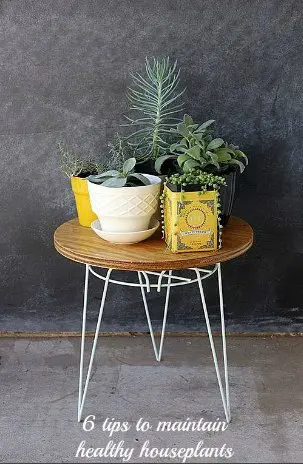
Jessica P says
Thanks for sharing this wonderful houseplant care article. I cannot resist the idea of indoor plants, especially having beautiful plants in my bedroom. They look visually aesthetic and are also good for my gentle breathing process. I have that habit of over-watering plants ( I will now take care not to do so). I am sure your tips will be a great help!
Green LMS says
Thanks for this amazing blog post on how to care for houseplants. All of the tips that you mentioned are very helpful for keeping indoor plants. I also really liked finding out the easiest indoor plants. I have a snake plant already and I agree that it is super easy. I can’t wait to try the other easy plants you mentioned.
Asim says
Thanks for sharing these excellent tips to keep indoor plants healthy. Your easy-care plants guide is very helpful. I chose 3:
Snake Plant (Sansevieria) – Nearly indestructible and thrives in low light.
ZZ Plant (Zamioculcas zamiifolia) – Drought-tolerant and glossy-leafed beauty.
Pothos – Fast-growing and forgiving, even in low light or irregular watering.
Moonlover says
This is a comprehensive and informative article on easy houseplant care, covering the basics of watering, pests, and light. It is well-written and easy to understand, with helpful tips for beginners. I especially appreciate the emphasis on not overwatering, as this is a common mistake that many plant owners make. The article also provides a list of easy-care houseplants, which is a great resource for those who are new to indoor gardening. Overall, this is an excellent article that I would highly recommend to anyone who wants to learn more about how to care for houseplants.
Empatka says
Thank you for this wonderful blog entry about low-maintenance houseplants and how to look after indoor plants. My favorite houseplant is the Peace Lily because it blooms in lower light and tells you when it needs water by drooping.
Sky says
Love this post— such good news for busy plant parents like me! I’m always on the lookout for easy care plants that thrive on infrequent watering. The rubber plant and snake plant are two of my favorites—those sword-like leaves are so striking! It’s amazing how some of the best indoor plants actually need so little water. Thanks for highlighting some of the easiest plants to grow—perfect for anyone who wants to care-for plants without the stress.
Dorry says
This is such a helpful roundup for anyone with a busy lifestyle! I’ve been trying to fill my home with low maintenance plants, and the money plant has quickly become a favorite. It’s said to bring good luck too, which is a bonus! I love how many of these small plants thrive in a shady spot with well-drained soil and need less water. For me, that’s the only way to keep things green without feeling overwhelmed. Thanks for sharing the best plant picks for stress-free care!
ibrahim says
Such a helpful guide—thanks, Scarlet! It’s always great to find plants that thrive with minimal effort, especially for beginners. This list is perfect for anyone looking to bring a bit of greenery into their home without the stress.